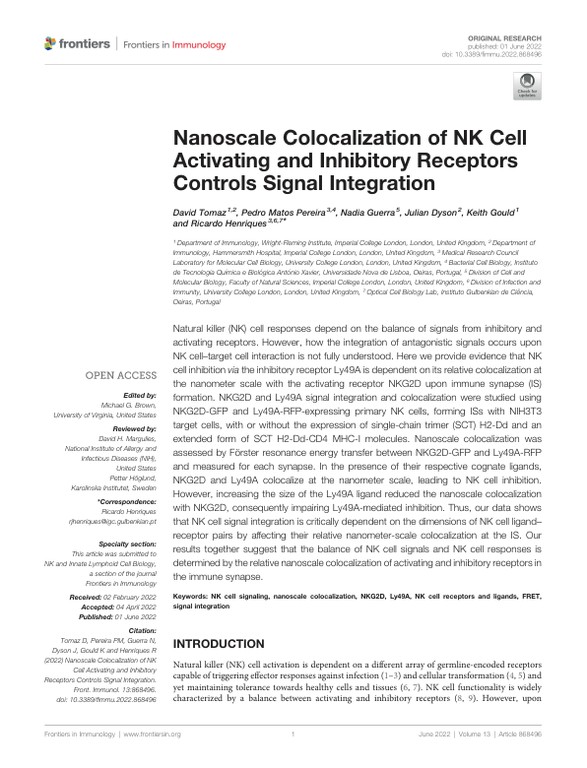Nanoscale colocalization of NK cell activating and inhibitory receptors controls signal integration
Technologies: NanoJ () and NanoJ-SQUIRREL ()
Paper published in Frontiers in Immunology, January 2022
Publisher: Frontiers Media SA

The manuscript by Tomaz et al. (2022) delves into the significance of nanoscale colocalization in natural killer (NK) cell signal integration. Using primary NK cells and Förster resonance energy transfer (FRET) measurements, the study demonstrates that Ly49A and NKG2D receptors colocalize at the nanometer scale upon immune synapse (IS) formation. This colocalization balance is proposed to determine NK cell signals. Previous research suggested that ligand dimensions affect NK cell responses, and the authors hypothesized that this is due to differential nanoscale colocalization of receptors based on ectodomain size. The results showed that Ly49A and NKG2D colocalize when both activating and inhibitory ligands are present, but not when only activating ligands are present. The size of the Ly49A ligand also affected its nanoscale colocalization with NKG2D and its inhibitory function. The authors propose that NK signal integration occurs through the relative size-dependent colocalization of receptors on the NK IS. The study provides evidence that the colocalization of Ly49A with NKG2D is crucial for the Ly49A-mediated inhibitory mechanism and that disrupting this colocalization by elongating Ly49A disrupted inhibition. The findings suggest that small changes in the nanoscale organization of receptors have significant consequences on NK cell responses.